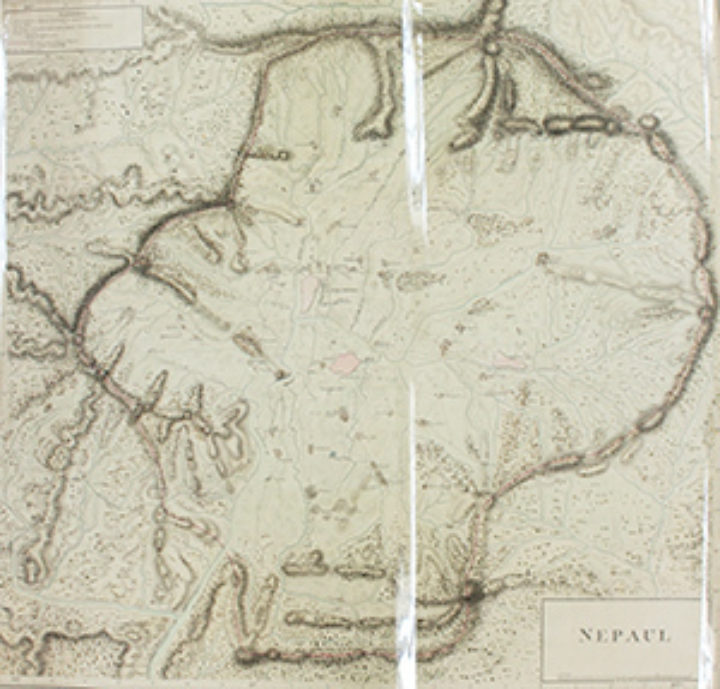December 2013: Maps of Nepal
Published on 2nd December 2013
Three maps of Nepal relating to the pioneering natural history collections of Francis Buchanan-Hamilton, 1802-3

A set of three manuscript survey maps of Nepal, executed by Major Charles Crawford and relating to the British Mission to Nepal in 1802-1803, have recently been acquired by the Linnean Society. These maps once belonged to Scottish surgeon-naturalist Dr Francis Buchanan-Hamilton, and relate closely to the botanical materials he collected during the year he spent in Nepal as Surgeon to the Mission. These were the first natural history collections from this Himalayan country, and so Buchanan-Hamilton has become known as the ‘Father of Nepalese Botany’.
In 1806, Buchanan-Hamilton gave his entire Natural History collection of manuscripts (notes and a partial Flora Nepalensis), coloured drawings (click here to find out more) and herbarium specimens to James Edward Smith, and these are also now in the Linnean Society Archives. The Linnean Society’s Buchanan-Hamilton collections are of international significance as they form the basis of hundreds of scientific names of Himalayan plants, and are the foundation of scientific botanical knowledge in Nepal. Buchanan-Hamilton’s only other Nepalese botanical material from this period is a very incomplete, duplicate set of herbarium specimens, which he gave to Aylmer Bourke Lambert - now in the Natural History Museum, London.
Crawford’s were the first accurately surveyed British maps of Nepal and hence of exceptional rarity and cartographic importance. The Surveyor General, Lt. Col. Robert H. Colebrooke, found the maps ‘executed with particular neatness’, and recommended that Crawford be directed to survey the Northern Frontier of Bengal, which he did in 1804-1805. These maps would have been politically sensitive documents, and so it is very unusual for a civilian to be given access to them. However, Buchanan-Hamilton’s patron was the influential Governor-General of India, Marquis Richard Wellesley, and it was through his orders that Crawford was able to favour him with copies.
These fascinating maps are not only cartographically superbly detailed, but they record the routes and camps used by the mission when travelling to and from Kathmandu, and the excursions undertaken and base camps within the Valley of Nepal. They can be correlated with Buchanan-Hamilton’s botanical records and so establish more precisely where these collections were made. Only one other extant set of these very rare maps is known, in the British Library special collections, and so they are of great cartographic as well as scientific importance.
